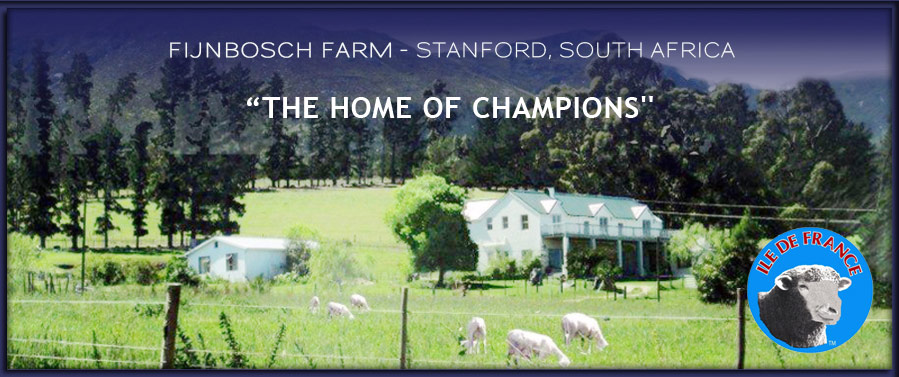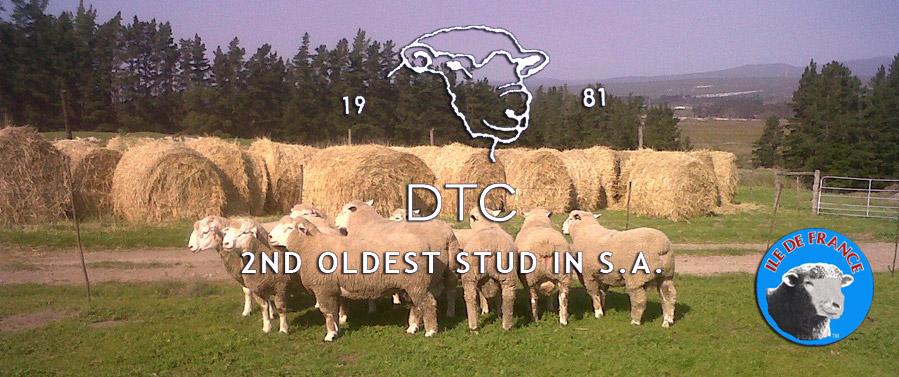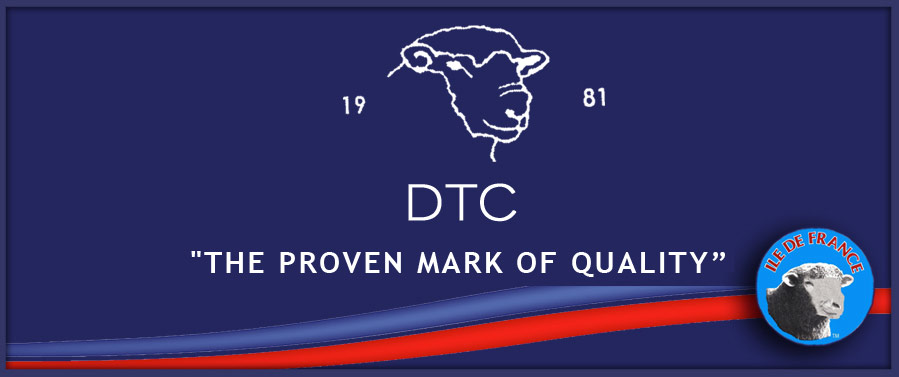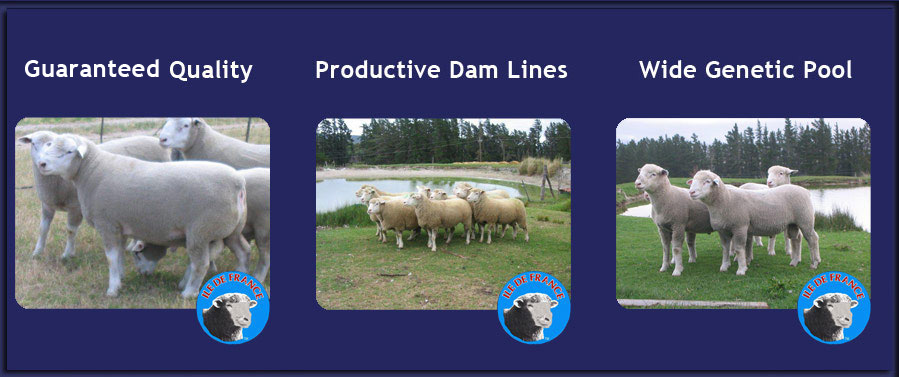 October 16, 2016
October 16, 2016 « ABOUT US - DENVOR STUD »
ABOUT US
DENVOR ILE DE FRANCE STUD
Denvor Ile de France stud started in 1981 in the Hofmeyr district in the Karoo.
The herd excelled in conditions not previously thought the IDF breed would survive, but the adaptability of the breed soon proved that this was an unfounded perception.
The family farm was sold and the herd moved to Hermanus district in the Western Cape [1988].
Yes, under intensive conditions this breed would further entrench it's superior ability in production efficiency in all departments of super lamb production.
Being the oldest Ile de France stud in SA the years of selection on genetic value together with performance testing has resulted in animals with functional efficiency and the desired breed characteristics, as can be seen from shows and demand throughout SA and by embryo exports to other countries.
The stud has participated in many national shows -every second year- in the past and has also produced numerous national champions. On 3 occasions it has ended up with the most points at these national shows.
In the March 2005 national show the prefix DTC (of the stud) was ever present and although it never participated in the show, 55 of the possible 91 placings were occupied by sheep bred by the stud or were direct descendents of the stud. This included the junior champion ewe and ram and reserve grand champion ewe and ram. This feat was repeatd in 2009, where the stud recorded the most points again.
Denvor Stud has also repeatedly excelled in the National Sire Ratings. The majority of the top performing rams originate from Denvor Stud [DTC] and other rams used in the stud.
The stud practices a form of line-breeding by having 3 ewe flocks in the herd. Rams of one group are used on the other group, where the ewes remain in the group for life. This ensures line-breeding and also prevents inbreeding. This system also assists in identifying efficiently productive ewes - a very important aspect in stud breeding - ewe efficiency i.e. prolificacy, milk production and genetic contribution.
This 3 ewe flock system also enables a prospective buyer to buy 3 ewes from the same herd, with different genetic backgrounds.
Embryo transplantation is the annual flushing of embryos from the top 10-15 ewes in the herd. This ensures at least 100-150 lambs of genetic quality, and speeds up genetic improvement drastically. An ewe can in one flush produce the same number of lambs she would normally produce in a lifetime of natural mating.
CONTACT
BOSSIE CLARKE +27 824417748
FIJNBOSCH FARM
HERMANUS [STANFORD]







Reader Comments